|
Paul
Screeton on leys, The Ley-Hunter and the earth mysteries movement
As editor of 'The Ley Hunter'
between 1969 and 1976, writer and folklorist Paul Screeton was a key
figure in the earth mysteries movement. e-interview by Rupert White.
The 1960's revival of ley-lines can be
traced back to Philip Heselton and Jimmy Goddard, who formed a
ley-hunter's club in 1962. They were originally interested in Tony
Wedd's theory that UFOs followed ley-lines in the landscape. Can you
expand on this please?
Those were the days! Ley-lines were
properly called leys, and the concept of sacred sites in alignment was
anathema to archaeologists. The 1960s held a postwar optimism as we left
austerity behind. Despite the nuclear threat, man went to the Moon and
flying saucers were seen as a mixed blessing: a threat like the ‘Red
Menace’ or angelic saviours fearing for mankind.
Frenchman Aime Michel believed UFOs followed straight flight paths and
English former pilot Tony Wedd associated this obscure notion with leys
and their aligned ancient sites, including centuries-old Scots pine
clumps.
Tony was a maverick character pioneering ecological, environmental and
liberal causes long before they became fashionable. Living in
Chiddingstone, Kent, his non-conformism led to an interest in UFOs and
in 1959 he planned a Chiding Day festival at which UFO contactee and
flying saucer traveller George Adamski (pictured below with 'Venusian')
would address fellow interstellar flight enthusiasts standing on the
ancient Chiding Stone.
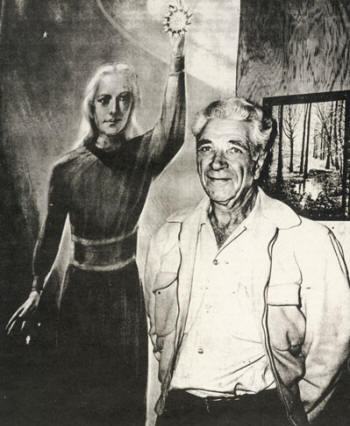
Tony came across Alfred Watkins’ ‘ley bible’,
The Old Straight Track, in 1949 and fresh from reading it discovered a
ley across Hampstead Heath, including tumulus and Scots pine clump. He
also read 'Flying Saucers and the Straight-line Mystery', by Aime
Michel, who argued that UFO sightings during a given 24-hour period
could be plotted as being in alignment. These Michel termed orthotenies.
Tony had sighted a UFO at Thorney Island during 1941. On such flimsy
grounds are connections made, but I have on my study wall a recent
picture of a flying saucer hovering over a clump of Scots pine.
Philip Heselton had met Tony at one of his STAR Fellowship rallies held
to promote a message of friendship to the Space People. It was in May
1961 and eventually Tony suggested Philip form the Ley Hunter’s Club.
This would be a modern version of The Straight Track Club (STC), which
had held day trips before the war. In 1962 Philip met former STC member
Egerton Sykes, who supplied him with a list of members’ names and
addresses. He had a data base.
Philip was assisted by Jimmy Goddard, a fellow Sunbury-on-Thames Grammar
School pupil. What was to become a lifelong interest in human contact
with extraterrestrials had been sparked by reading George
Adamski’s 'Flying Saucers Have Landed', borrowed from the school
library. The book was subsequently removed by the headmaster, who had
become alarmed at scholars’ upsurge in interest in UFOs.
A joint field trip by The Ley Hunter’s Club and Arthurian legend
interest group the Pendragon Society was held, but the scattered nature
of the membership militated against more such outdoor activities. Hence
production of a magazine took precedence.
As for the UFO interest, not everyone shared the deluded ‘beak’
censuring his pupils’ reading choice. Surely he should have been
encouraging young minds wanting to know about the universe and consider
the philosophical and scientific challenges the UFOs brought. No matter
that Carl Jung judged them to be at base a modern myth, and a portentous
one at that.
Jimmy Goddard, at 70, still believes he is in communication with Space
People, knows their universal language and publishes a quarterly
magazine in support of extraterrestrial and human contactees. Philip
Heselton, a geography graduate, was more down to Earth and is now an
influential figure in the pagan movement.
Myself, a daylight disc seen at close quarters in Wensleydale turned me
on UFOs and I have since become a repeater witness. However, I regard
the enigma as being earthbound and human at core.
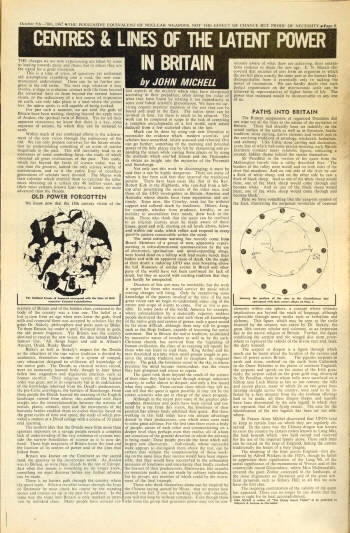
How did this, for you personally, lead
on to an interest in leys and the mystical landscape?
Each fortnight a liveried servant of Her
Majesty would push through the letterbox at my lodgings a copy of that
subversive organ of hippiedom and revolution, International Times. One
article in particular caught my attention (picture above - click to
enlarge). It was by John Michell (an unfamiliar name to me). It extolled
the virtues of ley hunting and Alfred Watkins’ visionary rediscovery of
a landscape criss-crossed by straight ancient trackways, which today
were used by another race for navigation, too – the flying saucerers .
Wow! Next day, during a break from sub-editing at the Hull Daily Mail I
visited the city’s central library and borrowed a dog-eared Methuen copy
of Watkins’ 'The Old Straight Track'. I read it, was hooked and little
did I suspect how my life would change irrevocably. John Michell told me
later that many such as myself found the revelation came as if forgotten
but familiar, akin to remeeting an old friend.
I had already devoured Pauwels and Bergier’s cornucopia of weirdness
'The Dawn of Magic', later retitled as a direct translation from the
original French as 'Morning of the Magicians'. Science fiction by Ray
Bradbury and the more speculative J. G. Ballard was also feeding my
brain. I had always best, leftfield strange fiction. In many spheres,
too, Colin Wilson had been an inspiration.
On a practical level, I began pencilling straight lines across Ordnance
Survey maps with gay abandon and imagined myself quite the expert. How
deluded I was. In those days my youthful enthusiasm excused the woolly
thinking. I was on a mission, evangelising, possessed, so as we
journalists say, ‘don’t let the facts get in the way of a good theory’.
But actually we were partially correct and my involvement and
proselytising led eventually to a sea change in archaeology, whereby the
old guard died off and a new breed lectured on ‘terrain-oblivious
lines’, in other words, leys.
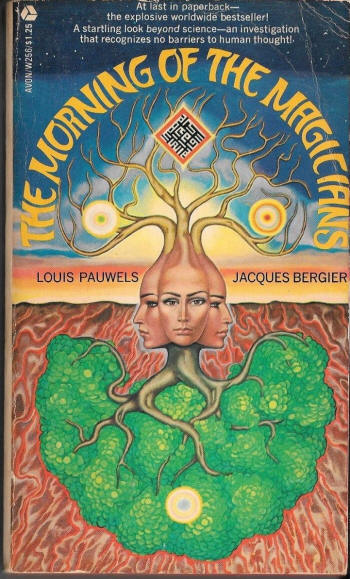
As you've mentioned, Heselton started up
The Ley Hunter magazine originally. What was it like then? How did you
end up reviving it in 1969?
Well, that encouragement from Tony Wedd led
to the first issue of The Ley Hunter. A slim affair, it appeared in
April 1965 with Philip Heselton as editor, with the Long Man of
Wilmington hill figure on the cover and a piece on Salisbury Plain
ancient sites. The second included a number of ley hunts undertaken on
foot to seek other marker points not on the map, significantly regarded
Coldharbour place names and unlikely to win academic approval, a piece
suggesting Atlantean migrants or survivors laid out the ley system. This
maverick spirit extended to club secretary Jimmy Goddard extending Tony
Wedd’s leys and UFOs link hypothesis in the third issue, plus Alfred
Watkins’s son Allen describing his first ley hunt and Philip Heselton on
the basics of ley hunting.
Subsequent issues discussed setting up a national ley index and a
Cambridge University plan to feed grid references of all British
prehistoric sites into a computer to see if leys are due to chance.
The sixth issue had a new editor, Ken Rogers, then a 17-year-old Daily
Express copytaker and secretary of Enfield UFO Investigation Society. He
also produced the seventh issue in November 1966. One further issue
was typed on to stencils but never published and was seemingly thrown
away. Jimmy recalled that Rogers was never committed and in his opinion
The Ley Hunter never completely folded and he was always on the look-out
for another editor. In fact, someone did offer but nothing came of it.
Then I volunteered. At this distance
in time I cannot recall how I got in contact with The Ley Hunter’s Club
originally. I was sufficiently infused with enthusiasm, so I must have
used my journalistic skills to track down Jimmy Goddard’s address. He
suggested I utilise my journalistic talents to take the baton,
editorship and continue production of the magazine. Jimmy’s insistent it
was a continuation and not a restart.
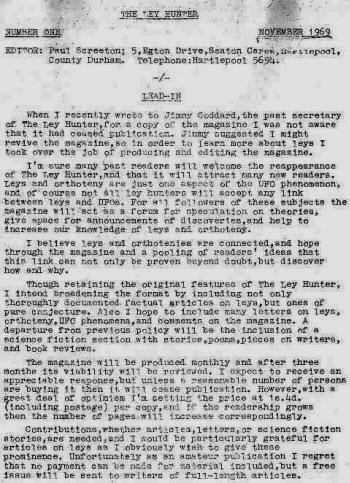
Coming to the practicalities of
producing the magazine, how was it distributed? How broad was the
content, and how did this change during the years you were editor?
Using a friend’s business duplicating machine I launched the new series
of The Ley Hunter in November 1969 with an introduction to ley hunting
by Jimmy, a piece on John Michell and another on tumuli allegedly laid
out in star patterns (picture above). Subscriptions rolled in and also
written contributions by Tony Wedd and Frank Lockwood (as ‘Circumlibra&rsquo:)
Subsequent issues developed a lively letters column and my father began
operating a primitive Gestetner machine to produce issues.
Issue 11 had contributions I solicited from American professors Lyle B
Borst and Oliver Reiser. Other contributors became authors eventually
and the magazine published a wide spectrum of earth mysteries topics.
The schedule slipped from being monthly, as quality trumped regularity.
There was cross-fertilisation with other small magazines, such as
Fortean Times, Arcana, Pendragon, Undercurrents and Torc. I was also
distributing through a few London shops such as Compendium in Camden and
Atlantis in Bloomsbury.
An indication of it getting well known came with a story in Fantasy and
Science Fiction by Keith Roberts which told of activating a telluric
power in the ley system, with the hero commenting, ‘The Ley Hunter’s
full of it, I’ve got a stack of copies over there.’
When the task to publish and distribute The Ley Hunter became too
time-consuming for one person, I reluctantly gave it up for adoption.
Paul Devereux rose to the challenge.
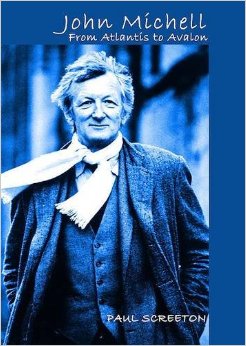
In your 2010 book 'From Atlantis to Avalon' (above) you said that
John Michell was first introduced to the notion of a link between UFOs
and ley-lines when he heard Jimmy Goddard speaking about it in 1965. Was
Jimmy based in London? What did John Michell's subsequent book 'The View
Over Atlantis' contribute to the Earth Mysteries movement?
The Ley Hunter magazine’s third issue
announced Jimmy Goddard would give a talk, ‘Leys and Orthotenies’, at
Kensington Central Library on 27 November 1965. The speaker has been
rather overshadowed by the audience member. This being the fateful
encounter of the formative Merlin of Hippiedom John Michell being
present and ‘turned on’ to the link between archaeology and ufology.
John was sufficiently impressed to include this connection in his
groundbreaking 1967 book 'The Flying Saucer Vision', the first author to
realise that fairylore had been hijacked unwittingly into the UFO
mythos, a cultural tracking trope later also championed by Jacques
Vallee in 'Passport to Magonia' and later others.
As for Jimmy, he was living in Addlestone, Surrey, with his fellow
ufologist wife Doris, nee Cropper. Jimmy currently edits two quarterly
magazines. Touchstone covers earth mysteries, Watkinsian ley hunting and
his own and others’ dowsing results. Amskaya is an unfashionable old
guard UFO mag. Doris is a real-life ‘Vicar of Dibley’, being a Church of
England minister in Somerset. My wife and I stayed with the Goddards –
our first meeting – as Jimmy, myself, Philip and John Michell were to
provide a panel discussing leys at Kensington Central Library under the
chairmanship of author Brinsley Le Poer Trench. Incidentally, Brinsley
was Lord Clancarty and advertisement manager of Gardener’s Weekly. Wags
joked that he sold space by day and watched it by night.
As for the influence of 'The View Over Atlantis' (TVOA), it basically
kick-started earth mysteries. (Incidentally that term was coined by ‘The
Unknown Sub-editor’ as a way to describe the subject. John Nicholson
termed it ancient skills and wisdom, while Bill Porter preferred his
hermetic topography. Geomancy was another epithet).
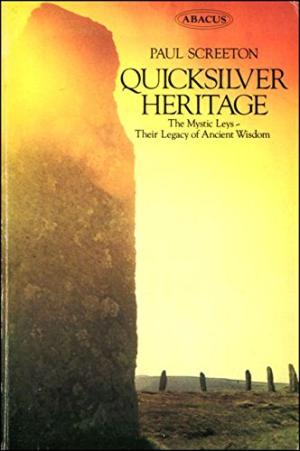
John published privately under the name Sago
Press when there were just isolated individuals interested in leys, UFOs
and dowsing. When the book became a surprise counterculture success,
fledgling publisher Michael Balfour brought out his Garnstone Press
edition. He also published other more arcane reprints under John’s
recommendation and also Jane and Colin Bord’s ‘coffee table’ pictorial
collection, 'Mysterious Britain'. I wrote 'Quicksilver Heritage' for
Garnstone (above), but Michael wanted changes I was unwilling to make,
so I went to Thorsons, where it was welcomed as it was. Incidentally,
Janet Bord worked for Thorsons as a freelance and copy edited my book.
TVOA showed how John had quickly absorbed elements of the early
antiquarians, founders of alternative archaeology, alignments pioneers
in Britain and Germany, the importance of seeing the development of a
global megalithic culture and how the universe is based on number and
geometry combined with spirituality. He never faltered from this vision,
though seeing the past as always a golden age suggests rose-tinted
spectacles. Also this book and the follow-up, 'City of Revelation',
introduced myself and fellow geomant Anthony Roberts to Gnosticism.
A revised edition followed to remove errors, contemporary legends and
general naivety. It formed a treatise for non-political change in how we
view the past. Even Aubrey Burl conceded that if the megalith
builders were savages howling at the Moon, they were also making
remarkable calculations about it movements and even slight wobble. It
was also more than straight lines, but avenue of new ideas to be
explored by a receptive generation.
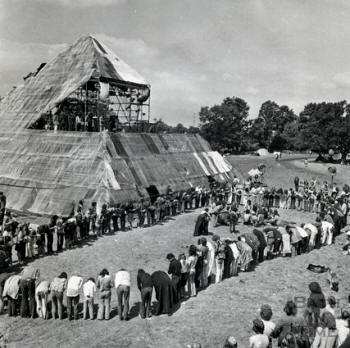
Can you explain how the
Mystics' Picnic in 1971 came about and who was there? What was its
relationship to Glastonbury and the first festival there?
A high point for me personally, and The Ley
Hunter as a network, was keeping readers informed of plans for this, the
largest gathering of ley hunters since pre-war days. Co-disorganised
with John Michell, fresh from his designing the pyramid stage at
Glastonbury Fayre (above), we gathered as near as possible to the
fiftieth anniversary of Alfred Watkins’ old straight track revelation.
Held on Saturday, 3rd July 1971, a witty sub-editor at The Times headed
a diary item ‘Mystics’ picnic’. The tip-off had come from Michael
Balfour.
After a talk by Alfred’s 88-year-old son Allen at Hereford City Library
and a drink in the Green Dragon Hotel, we piled into cars and headed for
Risbury Camp to picnic in the sun.
Glastonbury Fayre progenitor Andrew Kerr tried to teach me dowsing, Lord
Harlech’s daughters were also there fresh from the Michael Eavis farm
tribal gathering, as were others from the hippyocracy. Harlech TV had a
film crew for a documentary. Jimmy Goddard and Philip Heselton were
present, as was editor-to-be Paul Devereux. Allen Watkins and his wife
were there as the oldest participants and the youngest was three weeks
old Adam Albion.
It was a resounding success and on the Sunday, I, my wife and Philip
held a pilgrimage to Harley Court, where Alfred Watkins had lived. As
the train pulled out we left behind a most awe-inspiring thunder and
lightning display which literally shook the earth, followed by a
downpour of Biblical proportions. Were the Gods saluting us?
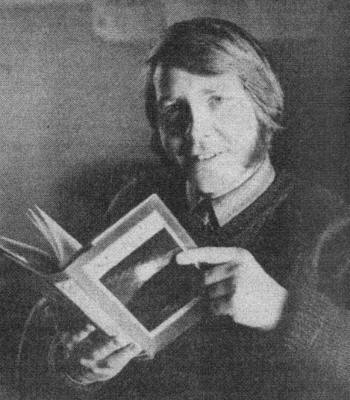
Quicksilver Heritage, which you've
mentioned, came out in 1974 and it's more accessible than John's
writing, but it ranges over some similar topics. At one point you say:
'for those who do wish to learn spiritual truths, leys offer an
alternative to the staid traditionalism and dogma of the church'...
Well, Quicksilver Heritage (QH - pictured above with the author in
'Undercurrents' 1975) has better structure than The View Over
Atlantis, I reckon. It was also certainly influential and from
occasional correspondence remains so forty years on. The publisher,
Thorsons, threw its money at the hardback with quality paper. It got
good press in regional newspapers but none nationally that I saw. That
was 1974.
Frankly, asking me about the book is somewhat like dragging up a
long-forgotten divorce [not that I have had such an experience]. A bit
painful. An era I enjoyed but have moved on from. I was always a
folklorist at heart and contemporary legend fitted my journalistic
career like a glove.
QH was a product of its time and now looks very dated and naive. All the
crystals, chakra, ether, orgone energy and spiritual bluff and guff.
Makes me a little queasy to think I played a role in instigating
the New Age pap. Remember this was my first book. I was a novice author.
Also not an expert in any of the subjects in the book. It now looks upon
a quick scan like a right rag-bag of undiluted pseudoscience,
pseudophilosophy and too much following others’ woolly-thinking. God
bless it.
In conversation with me in 1977, Dom Robert Petitpierre, Britain’s then
top exorcist, said the book had saddened him, in that he felt the Church
had let down my generation by allowing other more seemingly
attractive spiritual options to supersede Christianity. By this time I
had become a Gnostic Christian and still am. My wife in the
mid-Seventies became a Christian spiritualist medium. She has been
through a Charismatic phase and is currently settled as a local
Anglican.
In 1974 leys offered a very British – even English – alternative to
Eastern religions. Pseudo-druidry and paganism were popular. Even the
Aetherius Society and other saucerians were in the frame as options to
non-Christians. This countercultural milieu certainly enlivened society
and the faith debate. Young people found new politics, new music and new
philosophies. It influenced me greatly and, perhaps, I in a small way,
influenced the zeitgeist myself. Many of us from that era and disparate
offshoots are still in social media contact, and none the worse for
strange spiritualities abounding.
So why did you seemingly disappear from the
earth mysteries scene? What did you go on to do instead?
Frankly, like many others, I became
disillusioned with the New Agey telluric-power-dowsable-lines notion
being applied to leys, fantasy global geometric grids, followed by more
rational but controversial corpse roads and shamanic flight paths, the
last The Ley Hunter editor Danny Sullivan pronouncing ‘ley-lines’ dead
and buried, and the resurrection faithful who quickly fell out and
formed rival organisations. I then failed to find a publisher for a book
on the folklore of prehistoric sites, 'The Living Stones', (but extracts
appeared in small magazines between 1976 and 1984).
Meanwhile, I retained an interest in the megaliths themselves and with
John Watson driving me and occasionally others on regular weekend trips,
we visited and photographed a great many sites in Northern England.
Articles giving accounts of these visits appeared in Northern Earth
Mysteries magazine in 1980 and 1981.
After John Michell died I wrote the homage to him, 'From Atlantis to
Avalon', covering his writings and philosophy, rather than traditional
biography. It was for Heart of Albion Press, for whom I also wrote the
hybrid railway folklore book 'Crossing the Line' and a book of
contemporary legend essays linked by all having real persons as foci
instead of friend of a friend tales, 'Mars Bar & Mushy Peas'. For Jon
Downes’ CFZ Press I compiled an anthology, 'I Fort the Lore', and
followed with my investigative journalism magnum opus 'Quest for the
Hexham Heads'. Lastly came my fifth regional study, this time for The
History Press ghostlore series 'Haunted Hartlepool & East Durham'.
But most apposite here is the series of articles forming a personal
account of the history of ley hunting which were published in my
transatlantic friend Donald Cyr’s magazine 'Stonehenge Viewpoint',
published from California. These were collected together and published
in book form as 'Seekers of the Linear Vision' in 1994.
After editing The Ley Hunter, there has been a continuity of magazines
to this day. Since 1985 I have published the increasingly irregular
'Folklore Frontiers', covering various aspects of folklore and forteana.
There is an accompanying Facebook ‘open’ web site with 400 members. Both
can be quirky and ‘adult’. I also occasionally contribute to Fortean
Times and edit the Facebook site for Friends of Seaton [Carew] Station,
of which I am chairman.
Lastly, a word to the wise. Deny leys per se and you risk proverbially
throwing out the baby with the bathwater. The straightness aspect in the
landscape which Alfred Watkins chanced upon was visionary and relevant.
Admittedly his thesis offered more promise than it delivered, but
equally his countryman’s insight inspired following generations to look
at landscapes anew. He created the seekers of the linear vision – and
beyond.
All 71 editions of 'The Ley Hunter'
published between 1969-1976 are now online, in webspace shared with
artcornwall.org. Please visit: www.leyhunter.co.uk
Copies of 'Seekers of the Linear
Vision' are still available directly from the author [Paul Screeton] for
£7.00, from 5 Egton Drive, Seaton Carew, Hartlepool, TS25 2AT. All other
publications mentioned are for sale on the www. |








